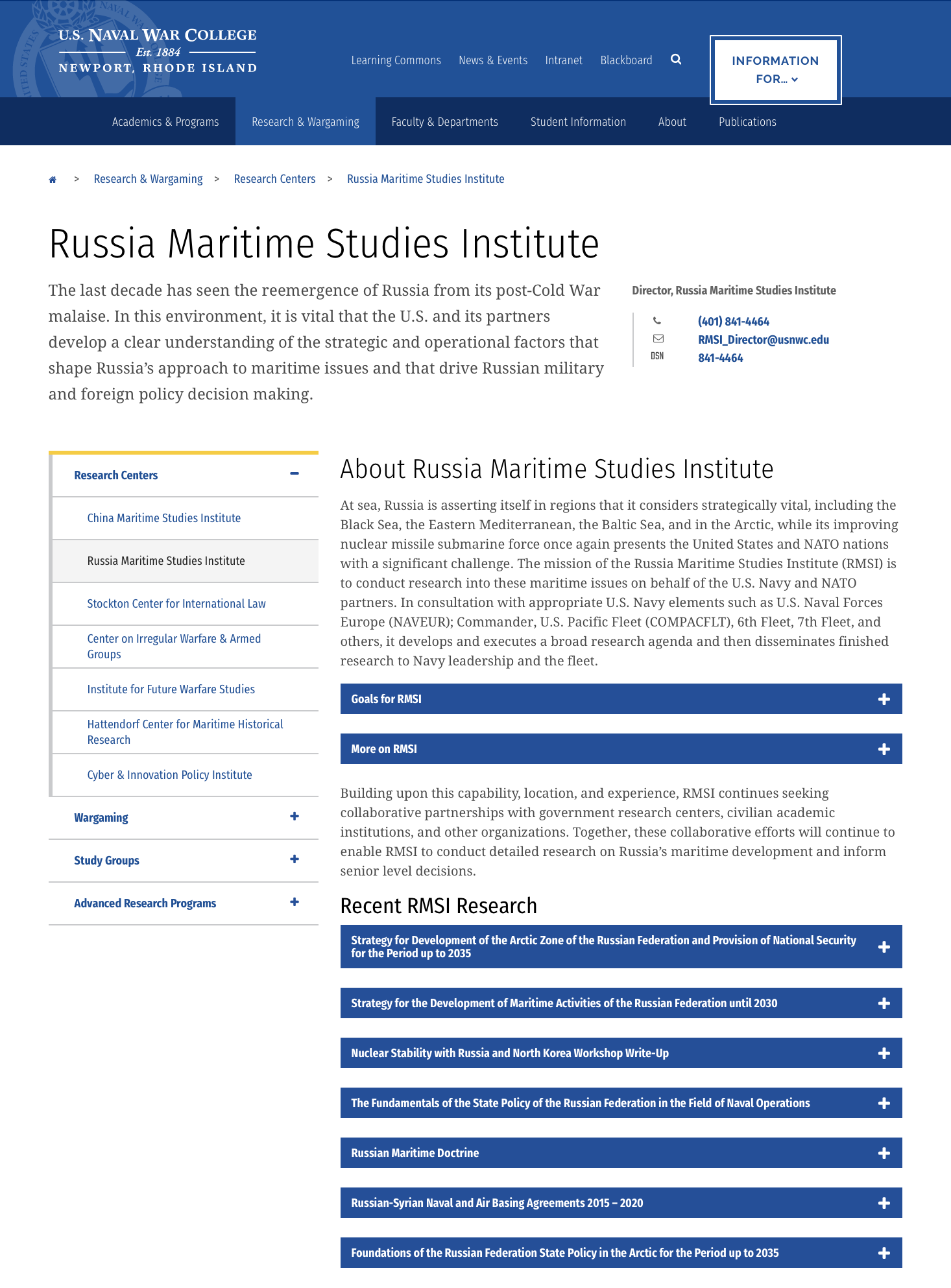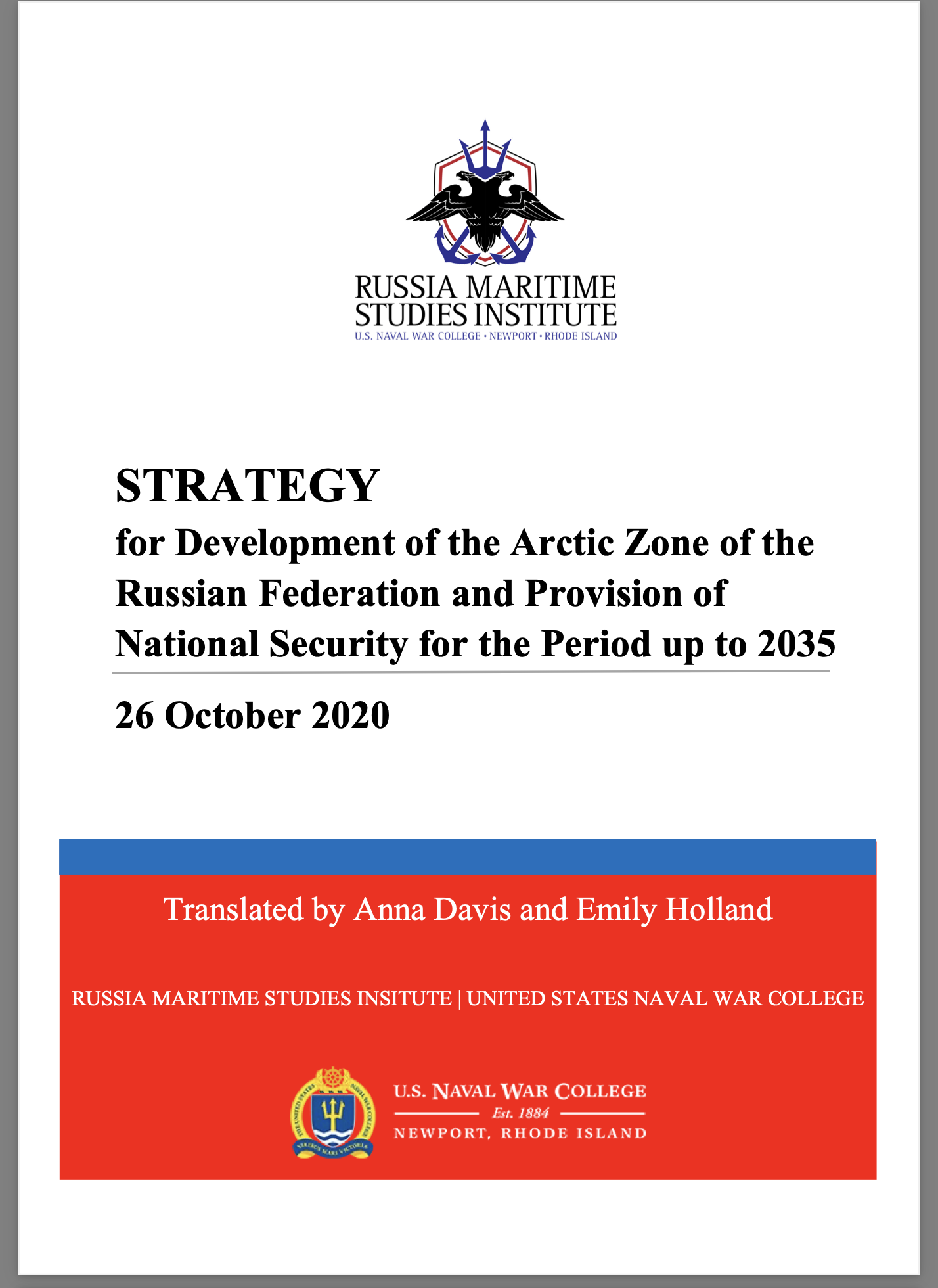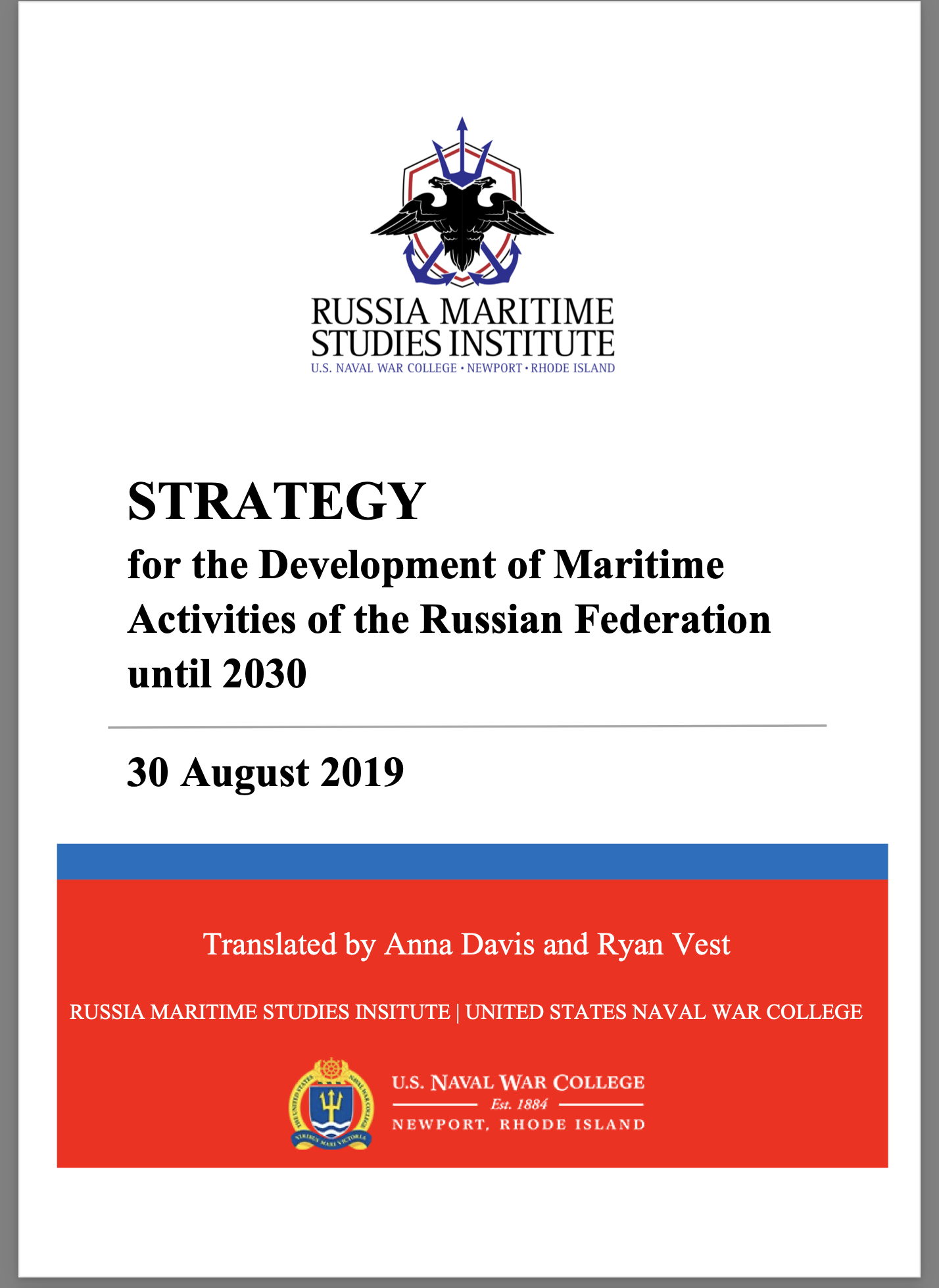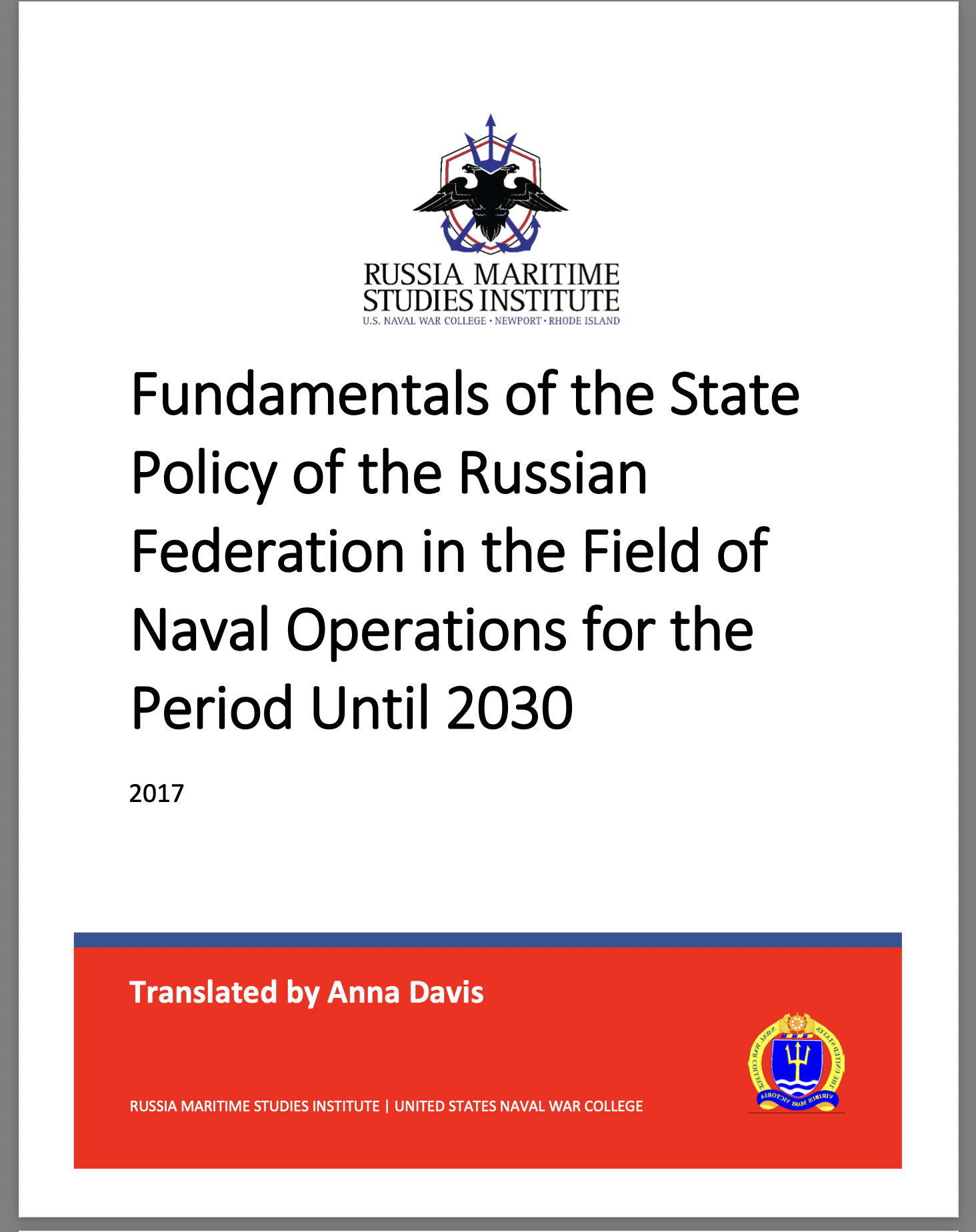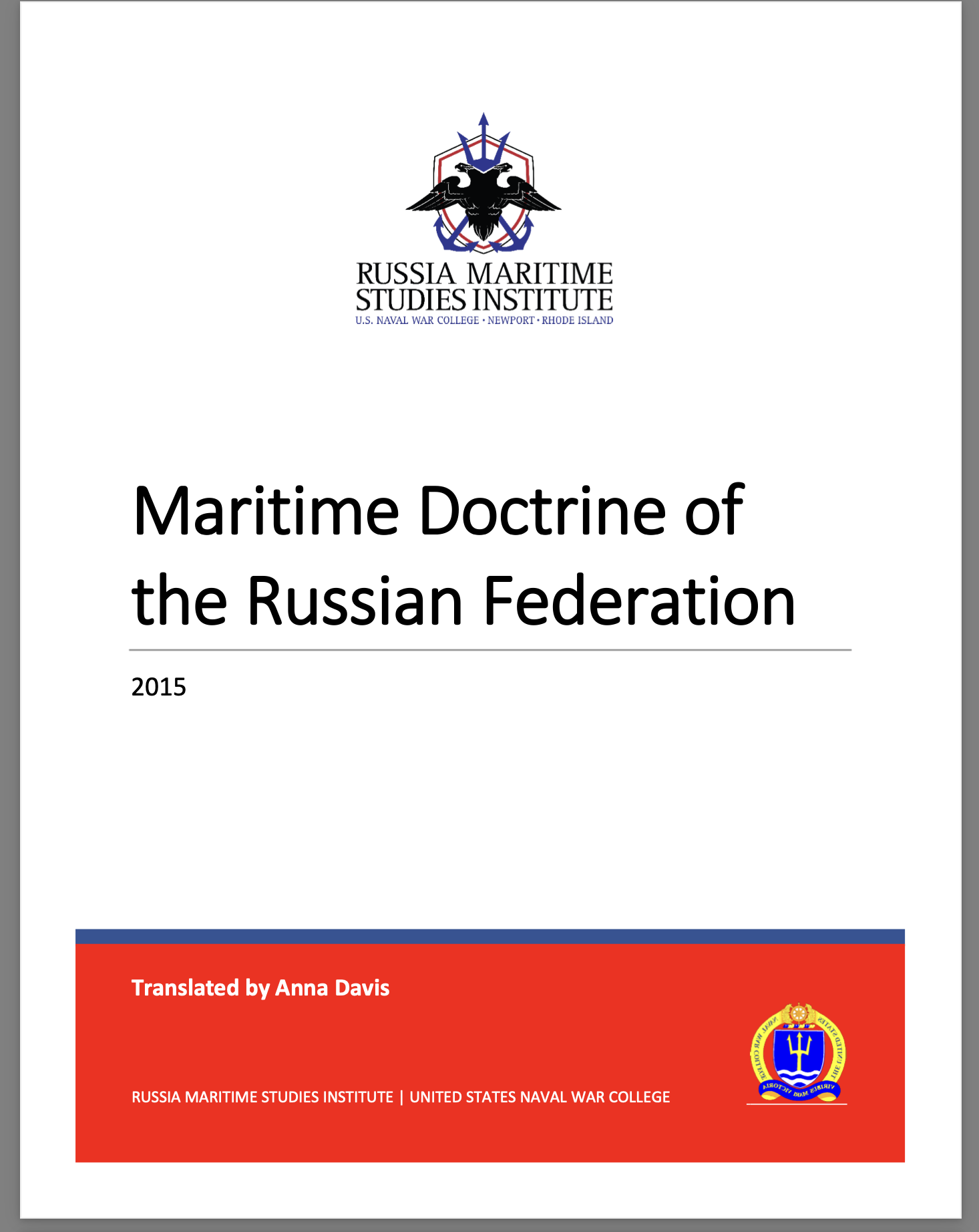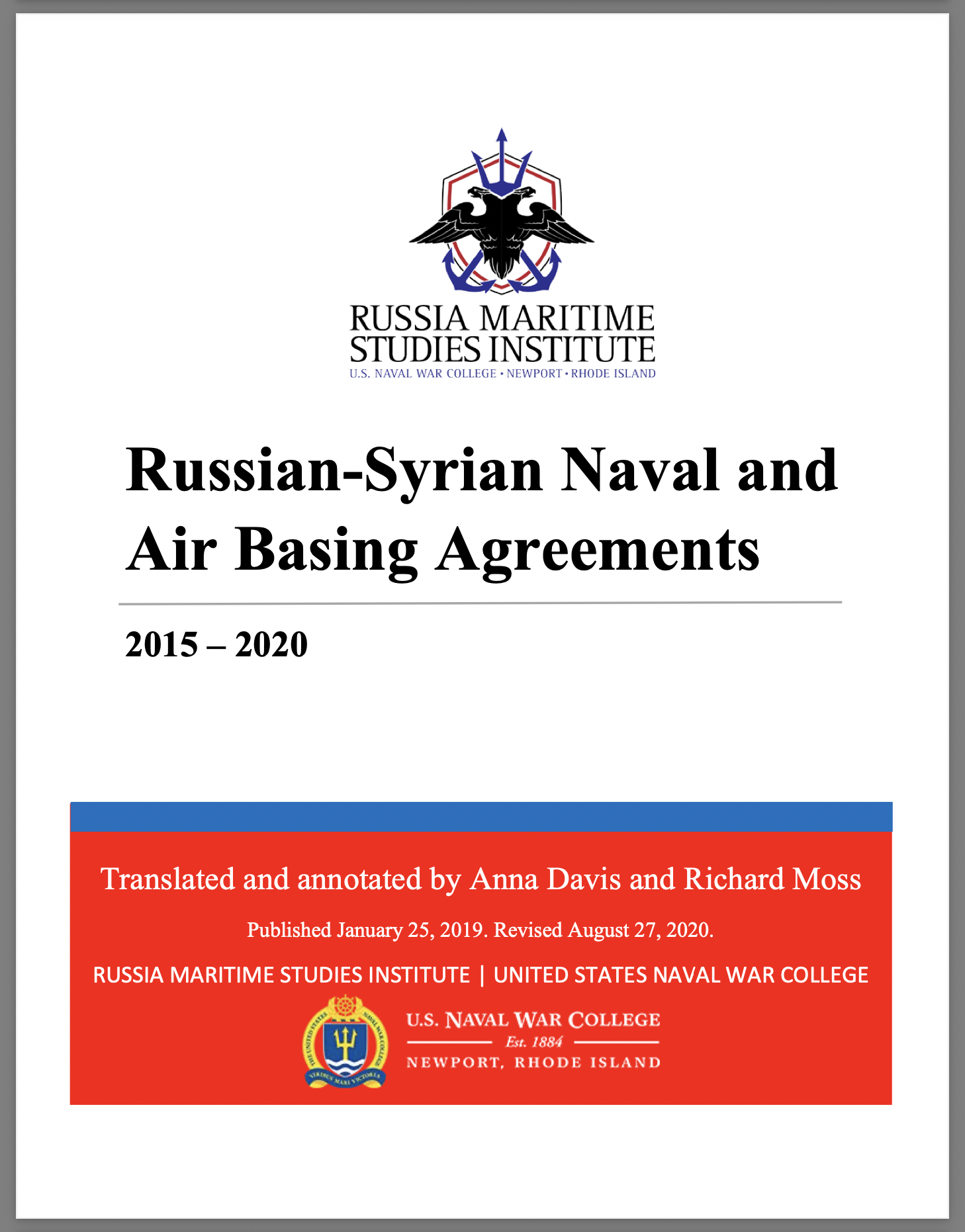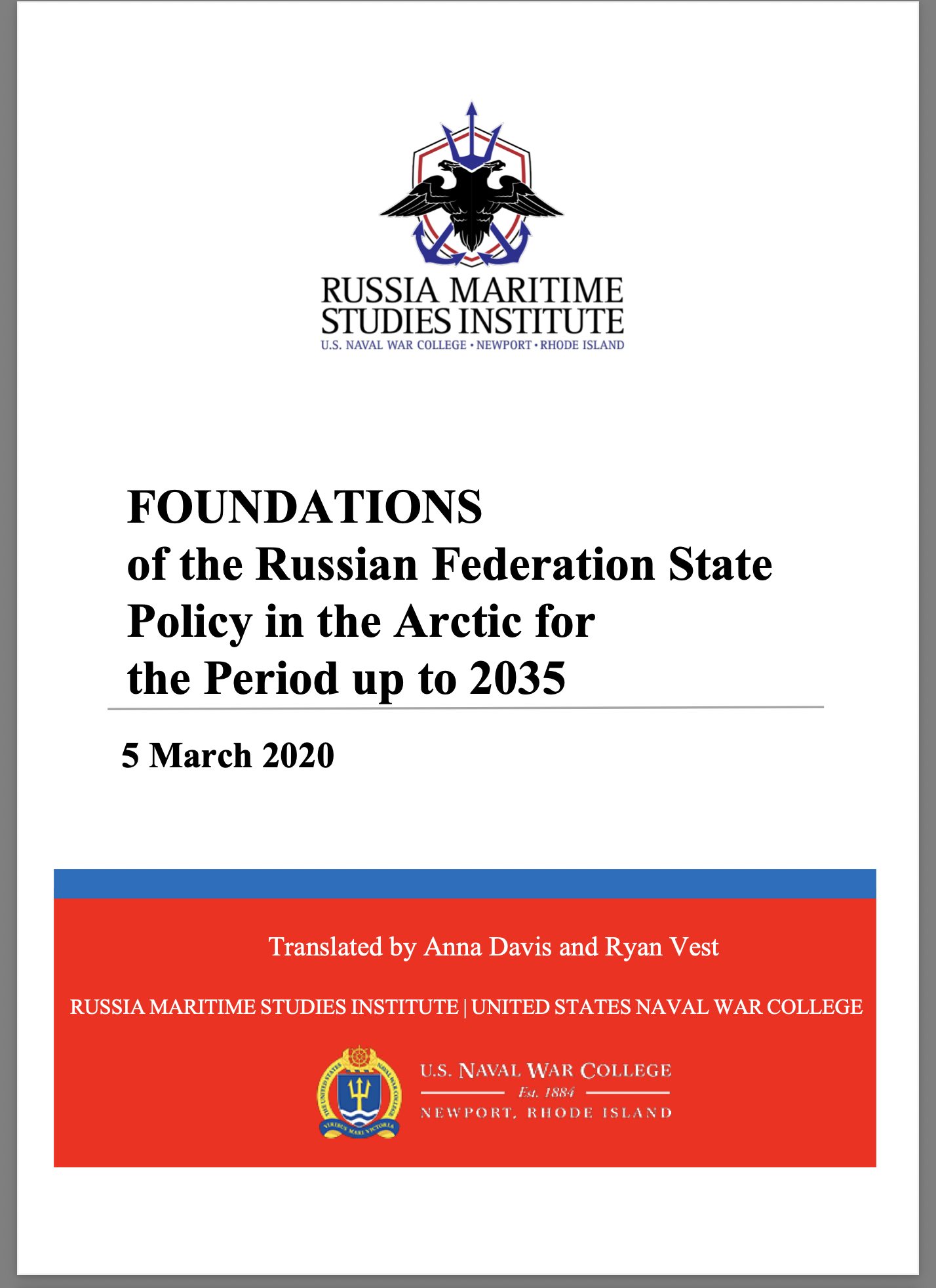Putin’s Naval Strategy & Development—Key Docs/Translations + Analysis from Russia Maritime Studies Institute
The last decade has seen the reemergence of Russia from its post-Cold War malaise. In this environment, it is vital that the U.S. and its partners develop a clear understanding of the strategic and operational factors that shape Russia’s approach to maritime issues and that drive Russian military and foreign policy decision making.
At sea, Russia is asserting itself in regions that it considers strategically vital, including the Black Sea, the Eastern Mediterranean, the Baltic Sea, and in the Arctic, while its improving nuclear missile submarine force once again presents the United States and NATO nations with a significant challenge. The mission of the U.S. Naval War College’s Russia Maritime Studies Institute (RMSI) is to conduct research into these maritime issues on behalf of the U.S. Navy and NATO partners. In consultation with appropriate U.S. Navy elements such as U.S. Naval Forces Europe (NAVEUR); Commander, U.S. Pacific Fleet (COMPACFLT), 6th Fleet, 7th Fleet, and others, it develops and executes a broad research agenda and then disseminates finished research to Navy leadership and the fleet.
This October 2020 publication is the implementation document for the previously published Foundations of the Russian Federation State Policy in the Arctic for the Period up to 2035, which was published the previous March. The Arctic Strategy provides details for the broader concepts and ideas laid out in the Foundations, as well as timelines and expected implementation results for the various measures it outlines. It is structured in a classic ends-ways-means approach, describing the ways and means by which Moscow will achieve the ends defined in the Arctic Foundations.
Strategy for the Development of Maritime Activities of the Russian Federation until 2030
Russia is taking a systematic approach to developing its presence in the maritime domain. Three documents published by Moscow since 2015 provide the roadmap for Russia’s global maritime ambitions. These are the Maritime Doctrine of the Russian Federation (2015), the Fundamentals of the State Policy of the Russian Federation in the Field of Naval Operations to 2030 (2017), and this document, the 2019 Strategy for the Development of Russia’s Maritime Activities to 2030. The Maritime Doctrine and the Naval Fundamentals articulate high-level policy objectives and provide a set of ways and means for achieving those objectives. In contrast, the Strategy focuses on implementation challenges as well as ways to determine measures of effectiveness in achieving the ends stated by its predecessor documents.
This document reflects the Russian Federal Navy’s (RFN) improved capabilities, its evolving strategic and operational role, and its future ambitions. Signed on July 20, 2017 by President Vladimir Putin, it provides a series of guideposts for understanding the RFN’s future, as well as broader insight into how Moscow approaches issues of national and international security.
The 2015 Maritime Doctrine of the Russian Federation
This document is arguably one of the most important doctrinal statements to emerge from Moscow in recent years. It is in any case Russia’s most important recent articulation of its maritime interests and goals, and therefore provides insight into how Moscow envisions Russia’s global role. Yet because of the challenges of reading Russian and the absence of a publicly available translation of this essential document, Western understanding of it is largely limited.
Russian-Syrian Naval and Air Basing Agreements 2015 – 2020
Since Moscow’s formal intervention in the Syrian conflict in September 2015, the Russian Federation and the Syrian Arab Republic have concluded a 49-year lease for the use and expansion of the naval base at Tartus, and a separate agreement on stationing the Russian “aviation group” at Humaymim airfield in Syria. These agreements build off longstanding Russian-Syrian ties, treaties, and cooperation agreements, and form the legal basis for Russia’s long-term presence in Syria. Further, the agreements denote the rights and protections Russian military members and contractors enjoy in Syria.
Foundations of the Russian Federation State Policy in the Arctic for the Period up to 2035
Current Foundations is a strategic planning document to ensure the national security of the Russian Federation and is designed to defend the national interests of the Russian Federation in the Arctic. This document defines the goals, main trends and objectives, as well as the means for implementing the State Policy of the Russian Federation in the Arctic.

